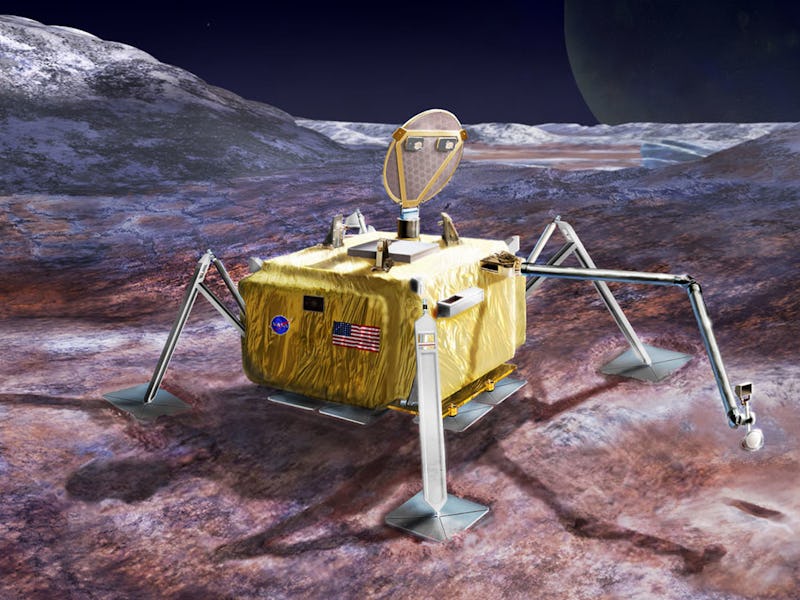Jupiter’s moon Europa possesses a saltwater ocean world beneath its icy crust. If there’s life swimming underneath, we might find out very soon.
NASA just received a report Tuesday detailing a conceptual landing mission to Europa, which is slightly smaller than Earths moon and has twice as much water as Earth’s oceans. Early last year, NASA’s Planetary Science Division started assessing the science value and engineering design of a future mission to Europa. In June 2016, a 21-person team assembled to create a report for the mission concept.
According to the report, the mission has three goals: To search for evidence of alien life on Europa, to assess its habitability, and to characterize the surface and subsurface for future explorations to this moon and its ocean.
The team also had to develop a strategy for finding life — a first for NASA since the Mars Viking missions over 40 years ago. Europa is also one of only two places where the ocean is in contact with a rocky seafloor (the other is Saturn’s moon Enceladus), which makes Europa a high-priority target for searching for signs of extraterrestrial life. We may find signs of life swimming beneath Europa’s crust.
In fact, researchers recently developed a chemistry test that’s ideal for detecting life on ocean worlds like Europa.
Europa is an ocean world covered by an icy crust.
Currently, NASA is developing a separate solar-powered Europa flyby mission, which will launch in the early 2020s. After journeying for many years, it will arrive at Jupiter and orbit it every two weeks for a series of 45 close flybys. During this mission, the spacecraft will map Europa’s composition and study Europa’s ocean and ice shell.
